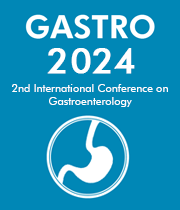Title : Prevention of high stercoral ulcer mortality
Abstract:
Colon perforation has been reported as caused by trauma, e.g., colonoscope perforation, malignancy, infection, amoebic colitis, diverticular disease, as well as spontaneous perforation, with ulcerative colitis. A not well-known cause is congenital Hirschsprung’s disease. And an up-and-coming epidemic of stercoral ulcer is expected in the coming years by opioid use in patients and drug addicts. C A Maurer reports that the incidence of stercoral perforation of the colon seems to be underestimated. Low mortality is obtained by early surgical eradication of the affected part of the colon, including all stercoral ulcers, and by aggressive therapy for peritonitis. Low mortality is also obtained by early diagnosis, and effective evaluation and treatment of constipation-especially in the elderly.
Gekas P et al report that significant features of this illness include preceding history of constipation, its presentation as an acute abdomen, radiologic signs of a perforated viscus, and a distinctive histologic picture.
Cameron et. al reports on a 27-year-old female heroin addict presented with a peritonitis and distended abdomen. Her medical history included heroin abuse with attendant constipation. She underwent an emergency Hartmann's procedure for perforation of the sigmoid colon. Pathology identified two areas of stercoral ulceration, one of them being the area of perforation.
One can foresee many more such cases in this era’s narcotics epidemic- especially in the young. The condition has a high mortality, although preoperative diagnosis may play a role in greater survival.
An important and preventable cause in Stercoral perforation defined as “perforation of the large bowel due to pressure necrosis from a fecal mass” is effective management of Chronic constipation which is considered to be the main cause in the development of stercoral perforation of the colon. Constipation enhances the formation of stone-hard fecalomas which maintain a persistent pressure over the bowel wall leading to pressure necrosis of the mucosa. There are several reasons why perforation sites are mainly located in the antimesenteric aspect and in the sigmoid colon:
(1) Hypo-perfusion existing in the antimesenteric aspect other than the mesenteric border due to its more distal location and more solid consistency.
(2) being the narrowest region of the entire large intestine stool has difficulty passing through the sigmoid colon which increases the intraluminal pressure to the point where it can compress submucosal capillary vessels and reduce perfusion of the colonic wall.
(3) prolonged localized pressure on the colon wall causes pressure ulcerations which cause perforations that usually occur in the anti-mesenteric margin of the sigmoid colon.
According to Maull et al Stercoral ulceration is the loss of bowel integrity from the pressure effects of inspissated feces. The lesion usually occurs in constipated, bedridden patients and presents as an isolated lesion in the rectosigmoid area.
The authors state that associated diseases in the population at risk, result in a mortality exceeding 50 per cent. The diagnosis of perforated stercoral ulceration should be considered in any patient with a long-standing history of constipation who presents with acute abdominal pain and clinical findings consistent with perforation of a hollow viscus. Early diagnosis and be confirmed as is the motto of this meeting "Gastroenterology: A view through the scope.” with as simple an endoscope as a disposable proctosigmoidoscopy if digital exam is negative even in the laxative unprepared patient Early surgery with vigorous debridement and irrigation of the peritoneal cavity and either exteriorization or resection with proximal colostomy is the treatment of choice. Since constipation and colonic dysfunction are more common in opiate addicts and the older patient, as the mean age of the population increases, physicians may encounter this problem more often.
In this presentation discussion will center on the prevention of this high mortality disorder utilizing early diagnosis and management of constipation.



